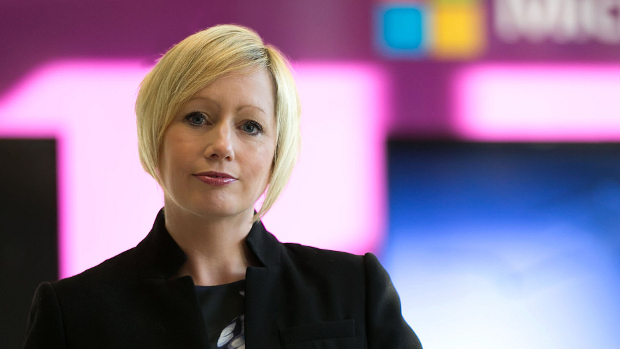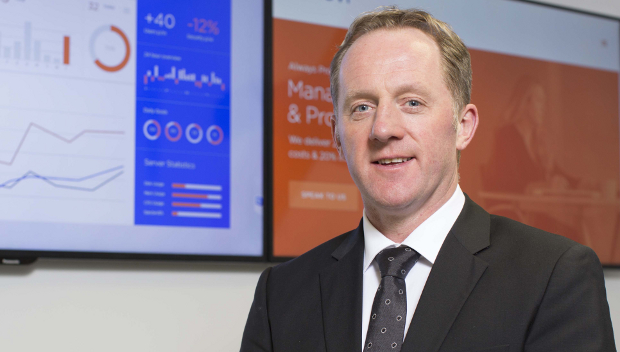
Measuring the RoI of digital investments
There was a time when measuring investment in IT projects was a straightforward process: the capital cost of hardware and software, which could be amortised over a number of years, plus the running costs, including staffing, were set against the value in the form of new business or a reduction in running costs.
Today, things look rather different.
With digital transformation underway more and more IT projects are taking a central focus in business activities, but they are consumed not as hardware, software and staffing costs, but effectively as a new and often volatile form of rents.
The clearest change is a move toward managed services, which means, in the simplest terms, a move away from capital expenditure to current expenditure. Cloud services, particularly multicloud, has made new ideas possible to execute – but it has also made accounting a complicated process, so just how can value be measured?
Culture issues
For Aisling Curtis, commercial director at Microsoft Ireland, the question is as much about cultural change as anything else.
“I do really think it represents, in short, a major change in culture, and it’s across the whole organisation,” she told TechPro.
Curtis said that ill planned digital transformations that do not take account of this often hit the buffers.
“You can often see education in employee engagement and productivity start to plateau – and start to decline in some instances. There are five generations in the workplace today, [so] you need to think about how people work.”

Behind this is blistering pace of change in today’s digital environments, she said, and the pace of work itself.
“People are dealing with e-mails, with tweets, even viral cat videos coming in. A lot of people would identify with techno stress and that feeling of burnout. One survey showed that 93% of employees feel they have low to average productivity. That has a cost.”
And yet digital transformation remains central to business IT today.
Curtis pointed to a 2018 Harvard Business Review study that showed companies that demonstrated a ‘forward thinking’ attitude saw a more than 10% increase in revenue growth.
The answer, she said, is to develop a true digital culture.
“There are things that are very evident when you have a digital culture: you see that adoption from leaders and you see access to IT support and a clear sense of what the benefits of IT are. A key part is to ensure that everyone feels included. You need employed engagement when you roll out a digital transformation strategy.
“One example is RTÉ, which used teams to increase collaboration and they had champions to help with that,” she says.
New methods for new business
Cultural change is no small issue, but it must be balanced against the cold, hard numbers. Annette Soraine, chief commercial officer at managed services provider Innovate, says that it must be married to a real accounting of value.
“It is a cultural question, too, but you also need to measure it,” she says.
“I think that, from a digital transformation point of view, you have to measure it because it requires investment and time and resources. I don’t think companies would embark on that level of change without it being measurable,” she says.
One way of looking at this has been cost savings, but that is not the only metric.

“If you look at the business outcome, traditionally people would have measured return on investment though, if you look at cloud for example, reducing investment in on-site hardware, the ability to flex up and down.”
Cost reductions are always welcome in business, but they are not the only issue: if cloud means anything then it means the ability to do things that were hitherto possible, if at all, only for major multinationals able to invest heavily in expensive iron.
“With digital transformation you’re really moving into measuring things that are more aligned to the business strategy,” says Soraine.
Big Data, for example, facilitates new business models – and with it a new way of looking at the cost of doing business.
“The move to the cloud is about access to data that would have sat in silos and wouldn’t necessarily have driven business decisions the way it is now. You can drive new products, get new customers and make real time decisions.
“I think one thing people fall down on is that they look at the cost of the initial IT project, maybe developing a new IoT [Internet of Things] service where you can measure the cost of the boxes or the software, but really you need to define your growth market.”
Staff training costs remain, as do the costs of actually running the services, but as agility becomes the order of the day measuring whether to not things are working must itself become more rapid.
“In measuring the return, you’re [still] measuring in the traditional way, looking at the lifecycle value of the new clients but it’s almost that each area that you’re embarking on has to be measured in and of its own self,” she says.
“Without a shadow of a doubt, you need leadership. If you don’t have the buy-in and the drive from the leadership on how it will drive the business goals, then it’s not going to work. Alongside that, you also need a culture within the organisation that is going to accept change,” says Soraine.
“I’d go a step further and say you have to foster a culture where people can be part of it, come up with ideas and not just be doing what is coming from the top down. The ‘fail fast’ mentality, try things, it’s not an issue if you fail but fail fast, so you need to have the measurements in place to identify if something is not working,” she says.
Long term view
Microsoft’s Aisling Curtis says that the changes already underway demand a longer term view.
“This movement from capital to operational cost is only going to intensify as this shift enables companies to reprioritise spending to investments with higher long-term strategic value and deeper RoI.”
With cloud strategy, cost control needs to be considered, though.
“Putting strong cost governance in place for any cloud migration programme allows an organisation to not only fully control how they scale, but also monetise the benefits of moving to a cloud architecture,” she says.
Planning, though, has to come first, as a haphazard approach will make measuring value much more difficult.
“When a company is considering a cloud migration strategy, it’s important that they first establish organisational priorities, to help accurately assess requirements, associated cost and potential RoI,” says Curtis.
The cloud has created new realities, she said, meaning the days of simple cost or capex savings being the sole RoI metric are over. Today, there are three basic considerations, she says.
“‘[A] lift-and-shift strategy brings speed and cost savings to the organisation at an IT level. This is best suited to organisations that need to quickly move from an existing data centre, manage the initial stage of organisational mergers and acquisitions or divest or downsize to ensure all critical data is secure and accessible. The key advantages here are usually contained to IT efficiency and cost saving.”
A second option, she said, is to look at optimisation: improving productivity or agility.
“Here we help them leverage the cloud to manage workload performance, compliance and cost with fit-for-purpose infrastructure that scales up or down dynamically with their business needs. This type of cloud strategy requires a longer-term investment and creates broader organisational value.”
Finally, she says, modernisation-driven cloud migration enables broad scale digital transformation.
“It can enable major organisational innovation, unlock broad business data value and enable deeply data-driven applications of advanced technology such as artificial intelligence. Here, initial investments in both time and cost are likely to be high, but expected RoI from this strategy over the long term is significant,” she says.
Nuts and bolts
George O’Dowd, chief executive of security at cloud service provider Novi, says that digital transformation must be at the forefront of their straggly and if it is not it will be their downfall – and that it is harder for some businesses than others.
“Ultimately people don’t like change,” he says.
“This is one of the big challenges, particularly for longstanding organisations. The challenge is that unless they adapt to it, they won’t be able to compete.”
Digital transformation strategies tend to come from on-high, he said, which can lead to a poor understanding of costs – and even to foot-dragging.
“Digital transformation is kind of boardroom-led, as opposed to being IT-led. CEOs are looking to bring that efficiency to the company [but] IT can be a blocker. Still, like it or not, the world is changing [and] ultimately digital transformation is going to bring about staffing efficiencies.”

Avoiding trench warfare is part or the cultural transformation required, then, but that still leaves the question of how to measure whether or not investments are paying off.
Cloud computing initially brought cost savings to most businesses, particularly in moving away from capital expenditure, but there remains the possibility for costs to spiral out of control as more and more services are purchased.
“In terms of return on investment, organisations that can adapt quickly will get it quickly; much more so than an organisation that resists it,” he says.
“But it is a more complicated calculation [than with traditional IT]. However, if your organisation is able to serve its customers on a 24/7 basis rather than on a Monday to Friday, 9-to-5 schedule, then clearly there is profit to be made.”
Put bluntly, cuts are part of this calculation.
“In terms of efficiencies internally, that’s where you need to be looking as staff are your biggest cost,” he says.
However, O’Dowd says, most businesses are unlikely to move to a pure cloud strategy. This is, of course, good news for IT staff, but it also means that the new cost metrics must be accounted for alongside more traditional ones.
In fact, in many cases a scorched earth or year zero approach will bring nothing but pain.
“The majority of organisations are going to end up with a hybrid set-up. Integration is an issue, but it shouldn’t hold up progress. You need to look at it from a functionality point of view. If you have, for example, a manufacturing organisation and they’re heavily reliant on an ERP [enterprise resource planning] system. Perhaps the sales dept aren’t heavily dependent on it, so cloud can be used there. Trying to find an all encompassing solution for everything can make it impossible,” he says.
Each organisation is different, of course, but the similarities are more important than the differences – at least in a fundamental sense, he says.
“All organisations have the same needs, believe it or not. They want to be able to share data internally easily – and externally – in a compliant and secure manner [and] they want ease of use along with it: frictionless, single sign-on. That really drives adoption and allies your organisation to benefit and [so you] quickly get an RoI,” he says.
Hard questions
Vinny O’Brien, who has worked with brands including Arnotts, eBay, Luzern and Mick’s Garage, and lectures in digital marketing at Dublin City University, says that more work needed to be done when it comes to accounting for the cost of doing business in hybrid IT and multicloud world.
TechPro asked him a provocative question: is there really value to be had in digital transformation?
“It’s hard to tell to be honest; there is value to be had, but it is sector specific,” he says.
Businesses need to change how they look at the question, he says.

“The way I’d look at it, and I’m not an accountant, is that there’s a lack of appreciation and a lack of understanding of the industry.
“There’s no defined PNL [profit & loss accounting] for cloud. Would you link it with rent, for example? Marketing is really poorly accounted for, too,” he says
O’Brien is a sceptic, but he does think that a better understanding is required.
“The one thing people are trying to sell in the SaaS [software-as-a-service] world now is total cost of ownership. Well, how do you measure a living breathing thing?
“Previously, it was generally only the IT manager who knew what was going on. Now, however, it has opened the ability for anyone to have a store of any size in minutes. That is powerful. Shopify, as an example of one of the hottest solutions, now allows you to choose from selected for a list of vetted vendors.
“However, most of the people deciding are not IT people. They’re marketing people or in operations. You don’t need a technical competence to make the decision,” he says.
Failure to change can lead to crisis, though. O’Brien points to online retailer Asos’s recently 68% plunge in profits, a precipitous drop driven, the business said, by a ‘disruptive’ year.
The lesson might just be that the true measurement of return on investment is the collapse of any returns if too much investment is driven toward traditional complex and bespoke systems.
“Margins are so tight in pure play e-commerce that having fixed cost developers makes no sense,” says O’Brien.
“One of their big losses was on internationalisation as their platform is such a beast.”






Subscribers 0
Fans 0
Followers 0
Followers